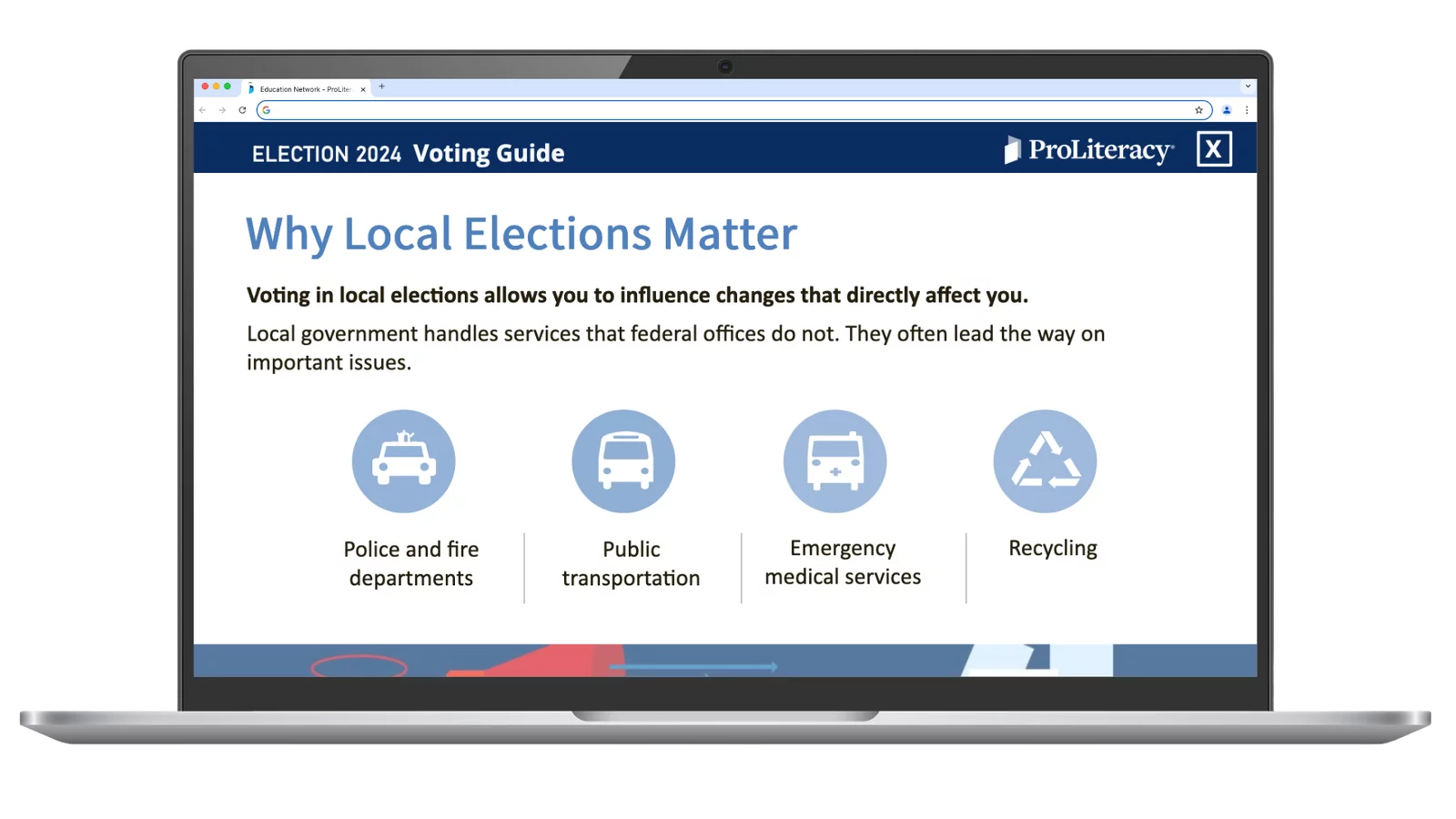Interactive Voting Guide Gives Programs an Un-biased Tool to Teach Civics Amid Election
In the midst of a presidential election year, instructors who are explicitly trained to teach literacy or English as a second language might struggle with the ability to also teach civics. As students get information—factual or not—they often come to class with questions, and we believe instructors should have the tools to unbiasedly answer those questions and talk about what the issues are.
One of the goals of adult literacy education is to give every adult the knowledge and confidence to participate in our elections and to have a voice. It is their right as US citizens.
Last year, as the nation geared up for the coming election, we digitized our long-popular plain language Voting Guide, published by our weekly news source News for You, and created an interactive course that builds civics and digital literacy.
“The ProLiteracy [Voting Guide] is our unofficial textbook,” said Jennifer Gagliardi, a teacher at Milpitas Adult Education.
The free course builds on the information from the print/pdf version of the Voting Guide to teach about political parties and campaigns, voting, and how to recognize misinformation using helpful links, videos, and more.
With the increasing ability to spread information, combined with the growing presence of new technologies like AI, teachers like Gagliardi find the information in the course necessary and invaluable.
“Our students get most of their news from their home-language media, which is greatly influenced by their domestic politics and their home government’s relationship, or problematic relationship, with the United States,” Gagliardi said. “[This course] has checked some of the more egregious claims of home-country media and social media.”
The Interactive Voting Guide has given programs an alternative option to guide students to information that will engage them in new ways and empower them to vote.
“The non-partisan nature of the Voting Guide and Interactive Course has been able to bridge this partisan gap,” Gagliardi said. “The content sets the groundwork for civil, fact-based classroom discussions.”
